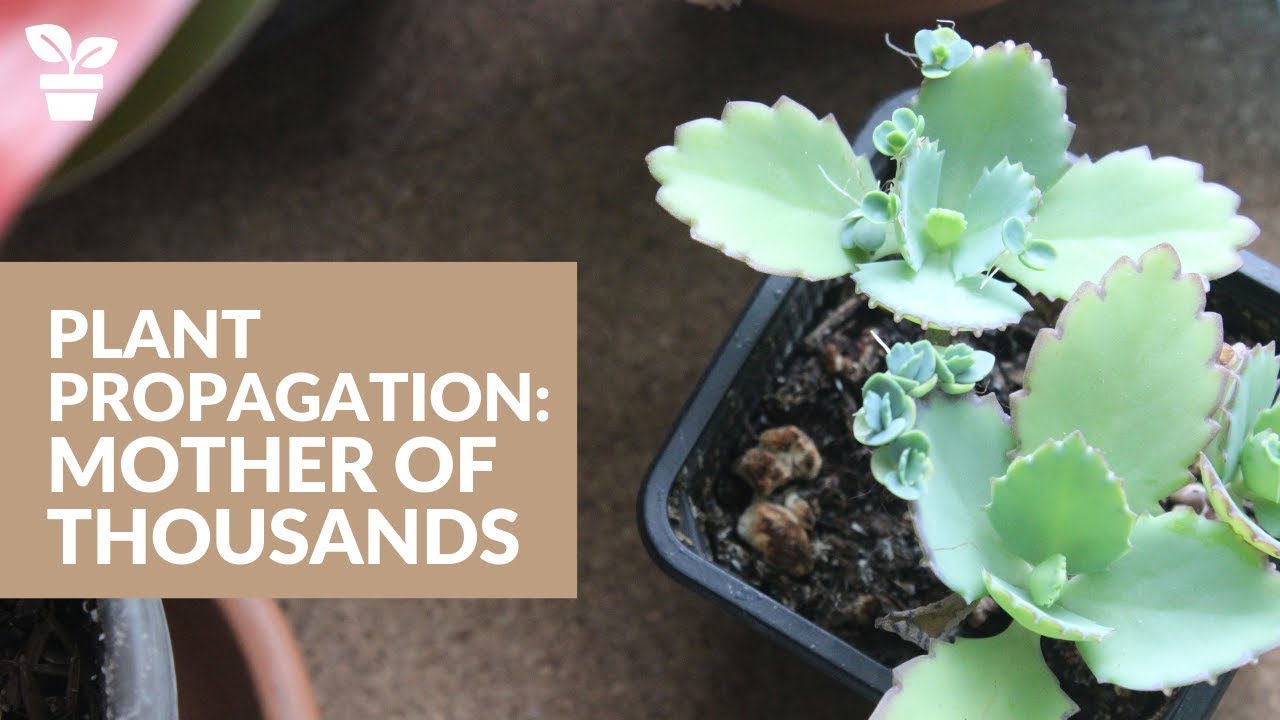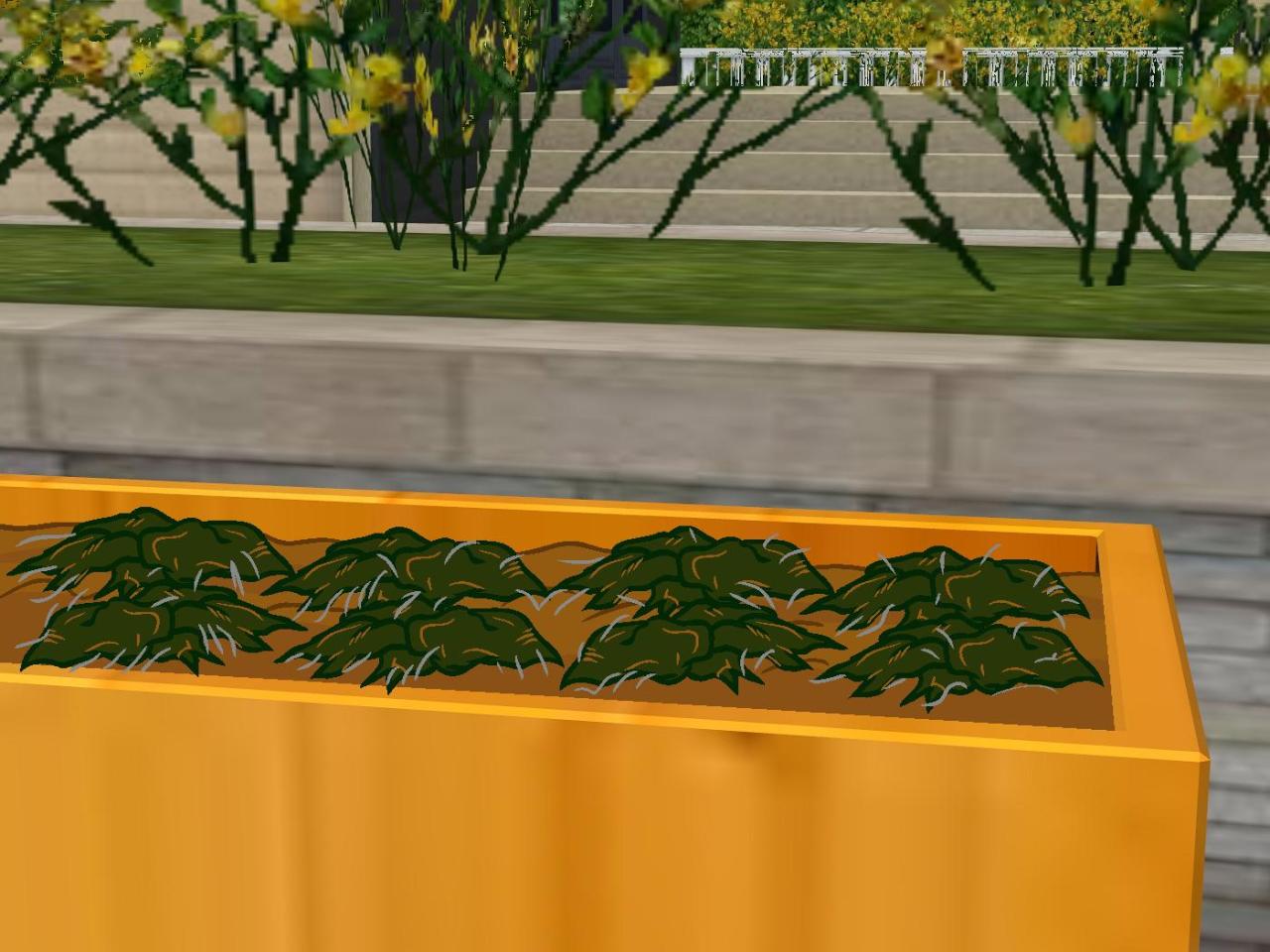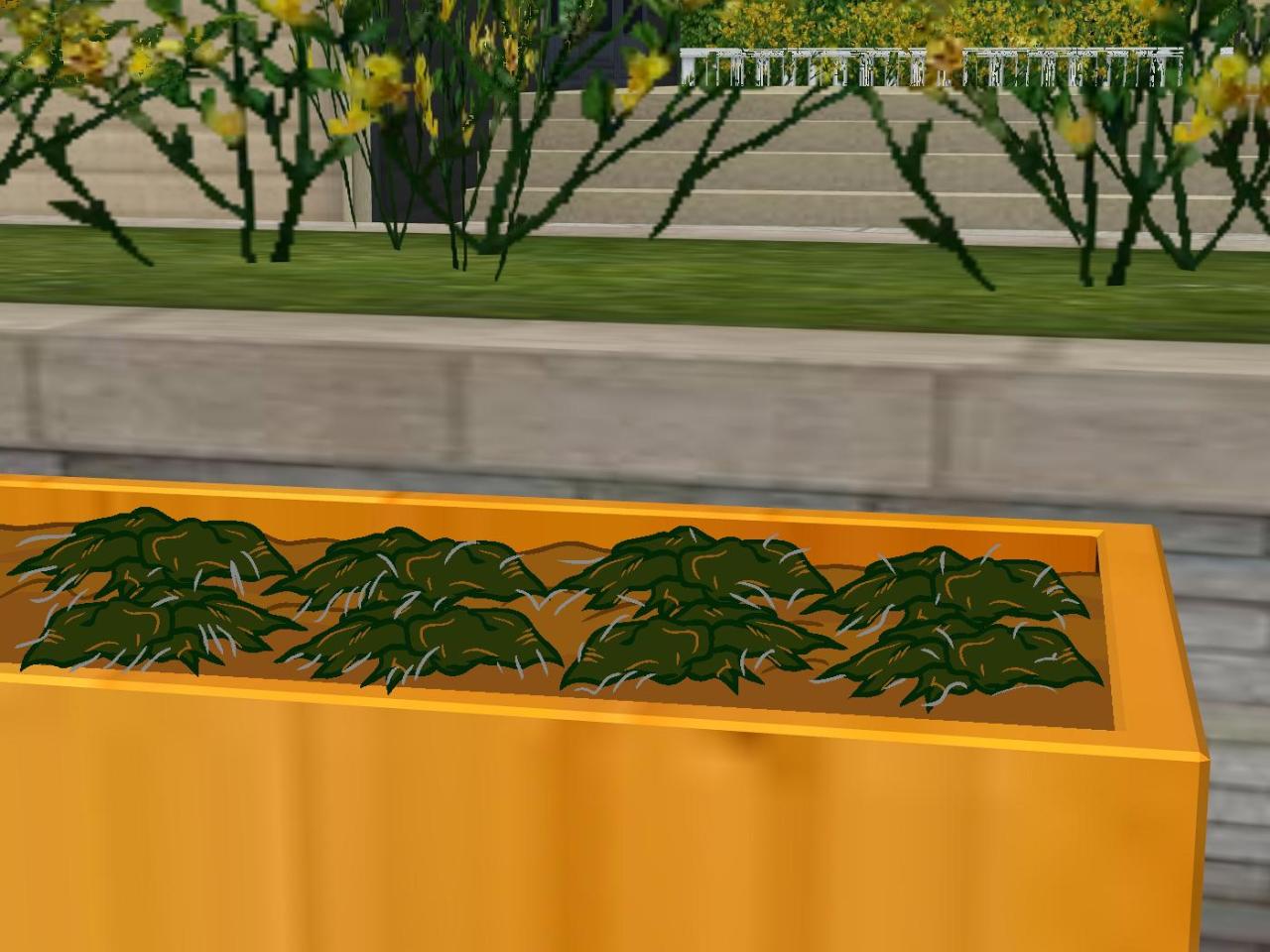Step-by-Step Instructions for Propagating Mother of Thousands Successfully is a comprehensive guide that will empower you to easily multiply your collection of these fascinating plants. Known for their unique ability to reproduce through plantlets, Mother of Thousands, also called Kalanchoe daigremontiana, is a popular choice for indoor and outdoor gardens.
Whether you’re a seasoned gardener or a beginner, this guide provides detailed instructions and helpful tips to ensure successful propagation.
From understanding the propagation process to mastering the techniques of leaf cutting and plantlet propagation, this guide will equip you with the knowledge and skills to cultivate a thriving collection of Mother of Thousands. We’ll explore the optimal conditions for successful propagation, including light requirements, temperature, humidity, and watering techniques.
Furthermore, we’ll address common issues that may arise during propagation, offering solutions and preventative measures to ensure a smooth and rewarding experience.
Introduction to Mother of Thousands
The Mother of Thousands plant, scientifically known as
- Kalanchoe daigremontiana*, is a succulent native to Madagascar. It is also commonly called
- Bryophyllum daigremontiana* or
- Devil’s Backbone* due to its unique characteristics.
The Mother of Thousands is a popular choice for both indoor and outdoor gardening due to its easy propagation and striking appearance. It is a fast-growing succulent with long, fleshy leaves that are edged with tiny plantlets, known as bulbils.
These bulbils are a key characteristic of the plant and contribute to its remarkable ability to reproduce.
Reasons for Popularity
The Mother of Thousands is a popular choice for gardeners due to its ease of care and its unique ability to reproduce through plantlets.
- Ease of Propagation:The plantlets that grow on the edges of the leaves can easily be detached and rooted, making it a simple and efficient way to propagate new plants.
- Fast Growth:Mother of Thousands is a fast-growing succulent, which means you can quickly enjoy its striking appearance.
- Drought Tolerance:The plant is highly drought tolerant, making it a low-maintenance option for gardeners. It can thrive in a variety of conditions, including dry climates.
- Attractive Appearance:The Mother of Thousands has distinctive, long, fleshy leaves that are edged with tiny plantlets. The leaves often have a spotted or mottled appearance, adding to its visual appeal.
Understanding the Propagation Process
Propagating Mother of Thousands is a simple and rewarding process, allowing you to easily expand your collection or share these unique plants with others. There are two primary methods: leaf cuttings and plantlets, each with its own advantages and disadvantages.
Methods of Propagation
Mother of Thousands can be propagated through two main methods: leaf cuttings and plantlets.
Step-by-step instructions for propagating Mother of Thousands successfully are essential for anyone looking to cultivate this unique plant. The process is simple, involving separating the plantlets that form along the edges of the leaves and planting them in a well-draining soil mix.
As you embark on your propagation journey, remember to visit Harvest Moon Orchard: A Treasure Trove of Autumn Fun for inspiration and a delightful autumn escape. With a little patience and care, you’ll soon have a flourishing collection of Mother of Thousands plants, adding vibrant green and playful charm to your home or garden.
- Leaf Cuttings:This method involves taking a healthy leaf from the parent plant and allowing it to root in a suitable medium. The leaf will eventually produce new plantlets along its edges, which can then be separated and potted individually.
- Plantlets:These are tiny, independent plants that develop on the edges of the parent plant’s leaves. They can be easily detached and potted in their own containers, quickly developing into mature plants.
Comparing and Contrasting Methods
Both methods have their pros and cons:
Method |
Advantages |
Disadvantages |
|---|---|---|
Leaf Cuttings |
|
|
Plantlets |
|
|
Optimal Time for Propagation
The ideal time for propagating Mother of Thousands is during the spring or summer months when temperatures are warm and humidity levels are high. This provides optimal conditions for root development and plant growth.
Step-by-step instructions for propagating Mother of Thousands successfully are essential for ensuring healthy, thriving plants. This process involves using the plantlets that grow along the leaf margins, a technique similar to how you’d propagate Venus flytraps, as detailed in What Every Gardener Should Know About Propagating Venus Fly Traps.
Once you’ve mastered this technique, you’ll be able to easily create a thriving colony of Mother of Thousands plants, adding a touch of unique beauty to your home or garden.
Note:Avoid propagating during the winter months when temperatures are cold and light levels are low.
Preparing for Propagation

Before diving into the propagation process, it’s crucial to gather the necessary materials and prepare your chosen potting mix. This ensures a smooth and successful propagation experience.
Materials Needed
The following materials are essential for propagating Mother of Thousands:
- Potting mix:A well-draining, airy potting mix is ideal for Mother of Thousands, as they are susceptible to root rot.
- Pots or trays:Choose pots or trays with drainage holes to prevent waterlogging. The size of the container will depend on the number of plantlets you are propagating.
- Sharp knife or scissors:A sharp knife or pair of scissors is needed for cleanly separating the plantlets from the mother plant.
- Rooting hormone (optional):Rooting hormone can be used to encourage faster root development, but it is not strictly necessary for propagating Mother of Thousands.
- Water:Clean water is needed for watering the plantlets after propagation.
Preparing the Potting Mix
The potting mix should be well-draining to prevent root rot. Here’s how to prepare a suitable mix:
- Option 1:Use a commercial cactus potting mix, which is typically well-draining and contains perlite or vermiculite for aeration.
- Option 2:Create your own potting mix by combining equal parts of peat moss, perlite, and vermiculite.
- Option 3:Combine equal parts of potting soil, coarse sand, and perlite.
Important Note:Regardless of the potting mix chosen, ensure it is free of pests and diseases.
Leaf Cutting Propagation: Step-by-Step Instructions For Propagating Mother Of Thousands Successfully
Leaf cutting propagation is a popular and effective method for multiplying Mother of Thousands plants. This technique involves taking healthy leaf cuttings from the parent plant and encouraging them to develop roots and new growth.
Preparing Leaf Cuttings
Preparing the leaf cuttings is crucial for successful propagation. This involves selecting healthy leaves, trimming them properly, and optionally applying rooting hormone to encourage root development.
- Select Healthy Leaves:Choose mature, healthy leaves from the parent plant, free from any signs of disease or damage. Avoid using leaves that are too young or too old, as they may not root as readily.
- Trim the Leaf Cuttings:Using a sharp, clean knife or pair of scissors, cut the leaf cutting from the parent plant. Make the cut just below the leaf node, where new growth emerges. Leave a small portion of the stem attached to the leaf.
- Apply Rooting Hormone (Optional):Rooting hormone is a powdered or liquid substance that can promote root development in cuttings. While not essential, applying rooting hormone can increase the chances of successful propagation. Follow the instructions on the rooting hormone product label for application.
Planting Leaf Cuttings
Once the leaf cuttings are prepared, they can be planted in a suitable potting mix. The planting depth and spacing are important factors for successful root development.
- Choose a Suitable Potting Mix:A well-draining potting mix, such as a mixture of peat moss, perlite, and vermiculite, is ideal for propagating Mother of Thousands. Avoid using heavy, clay-based mixes that can retain too much moisture and lead to root rot.
- Plant the Cuttings:Gently insert the leaf cutting into the potting mix, ensuring that the cut end is in contact with the soil. Do not bury the entire leaf cutting; leave a portion of the leaf exposed to the air.
- Space the Cuttings:Allow sufficient space between the leaf cuttings to prevent overcrowding. This allows for proper airflow and light penetration, which are essential for healthy growth.
- Water Gently:Water the cuttings thoroughly after planting, ensuring the potting mix is evenly moist. Avoid overwatering, as this can lead to root rot. Allow the top layer of the potting mix to dry slightly between waterings.
Plantlet Propagation
Mother of Thousands plants are aptly named for their prolific production of tiny plantlets, which are essentially miniature versions of the parent plant. These plantlets develop along the edges of the leaves and are a simple and effective way to propagate new plants.
Collecting Plantlets
Plantlets are readily available on the leaves of Mother of Thousands plants. They are small, usually less than an inch in diameter, and have a distinct green color. As they mature, they will develop their own roots and leaves, making them ideal for propagation.
Selecting Healthy Plantlets, Step-by-Step Instructions for Propagating Mother of Thousands Successfully
It is crucial to select healthy plantlets for successful propagation. Look for plantlets that are plump, have a vibrant green color, and show signs of root development. Avoid plantlets that appear shriveled, discolored, or have no roots.
Removing Plantlets
Gently remove plantlets from the parent plant using a sharp knife or scissors. Make a clean cut close to the base of the plantlet, ensuring not to damage the parent plant. Once removed, you can immediately plant them in individual pots or trays.
Planting Plantlets
Prepare a well-draining potting mix and fill individual pots or trays with it. Gently press the plantlets into the soil, ensuring that the roots are well-covered. Water the plantlets thoroughly after planting, and keep the soil moist but not soggy.
Caring for Propagated Plants
Once you’ve successfully propagated your Mother of Thousands, it’s crucial to provide the right care to ensure their healthy growth and development. Newly propagated plants are more sensitive and require specific conditions to thrive.
Light Requirements
Mother of Thousands thrive in bright, indirect light. Direct sunlight can scorch their leaves, especially during the hottest hours of the day. The ideal location for your propagated plants is a windowsill with filtered light, such as a north-facing window or a south-facing window with a sheer curtain.
Temperature and Humidity
These plants prefer warm temperatures, ideally between 65-80°F (18-27°C). They can tolerate a slightly cooler environment, but temperatures below 50°F (10°C) can stunt their growth. Moderate humidity is beneficial, but they can tolerate a drier environment. If your home is particularly dry, consider misting your plants occasionally.
Watering Schedule
Allow the soil to dry slightly between waterings. Overwatering can lead to root rot. Water thoroughly when the top inch of soil feels dry to the touch. Ensure proper drainage to prevent waterlogging.
Care and Maintenance
- Repotting:Once your propagated plants have established roots, repot them into a slightly larger pot with well-draining potting mix.
- Fertilizing:Feed your Mother of Thousands with a balanced liquid fertilizer diluted to half strength every 4-6 weeks during the growing season (spring and summer). Avoid fertilizing during the winter months when growth slows down.
- Pest Control:Mother of Thousands are generally pest-resistant. However, keep an eye out for common houseplant pests like mealybugs and aphids. If you notice any pests, treat them promptly with insecticidal soap or neem oil.
Troubleshooting Common Issues

While propagating Mother of Thousands is generally straightforward, you might encounter some challenges along the way. Understanding common issues and their solutions can help ensure successful propagation.
Rotting Cuttings
Rotting cuttings are a common problem during propagation. This occurs when the cutting sits in moist conditions for too long, leading to fungal or bacterial growth.
- Use sterile tools:Sterilize your cutting tools with rubbing alcohol or a bleach solution to prevent introducing bacteria or fungi.
- Allow cuttings to dry:Let the cut end of the leaf callous over for a day or two before placing it in the propagation medium. This helps prevent moisture from entering the wound and promoting rot.
- Avoid overwatering:Ensure the propagation medium is slightly moist but not soggy. Overwatering can create an environment conducive to rot.
- Use a fungicide:A fungicide can help prevent fungal growth and protect the cuttings from rot.
Slow Growth
Slow growth in propagated Mother of Thousands can be caused by several factors.
- Insufficient light:Mother of Thousands thrive in bright, indirect light. If the cuttings are not receiving enough light, they may grow slowly or become leggy.
- Inadequate nutrients:The propagation medium may not provide enough nutrients for the cuttings to grow vigorously. You can use a diluted liquid fertilizer specifically formulated for succulents.
- Improper temperature:Mother of Thousands prefer warm temperatures, ideally between 65-75°F (18-24°C). If the temperature is too low, growth may be slow.
- Overcrowding:If the cuttings are overcrowded, they may compete for resources and grow slowly.
Pests and Diseases
Although Mother of Thousands are relatively pest-resistant, they can still be susceptible to some common pests and diseases.
- Mealybugs:These small, white, cottony insects can infest plants and feed on their sap. You can control mealybugs with insecticidal soap or rubbing alcohol.
- Aphids:These tiny, soft-bodied insects can also feed on plant sap. Use insecticidal soap or a strong jet of water to dislodge aphids.
- Root rot:This fungal disease can occur if the propagation medium is too wet or poorly draining. Repot the cuttings in fresh, well-draining soil, and avoid overwatering.
- Leaf spot:This fungal disease can cause brown or black spots on the leaves. Remove affected leaves and avoid overwatering to prevent further spread.
Success and Beyond
Successfully propagating Mother of Thousands is a rewarding experience, signifying your ability to nurture new life. As your propagated plants mature, they will bring joy and vibrant green to your home or garden.
Signs of Successful Propagation
Identifying signs of successful propagation helps you gauge the health and progress of your new plants. Observing these indicators ensures that your propagation efforts are on the right track.
Indicator |
Description |
|---|---|
Root Development |
The appearance of healthy roots, usually white and firm, indicates successful rooting. |
New Growth |
The emergence of new leaves, often smaller than mature leaves, signals successful establishment. |
Healthy Plant Appearance |
A vibrant green color, firm texture, and absence of wilting or discoloration are signs of a healthy plant. |
Maintaining Propagated Plants
Once your Mother of Thousands plants have successfully rooted and established themselves, it’s crucial to provide the right care to ensure their continued growth and health.
“Consistent care is the key to a thriving Mother of Thousands.”
- Light:Mother of Thousands thrive in bright, indirect light. Avoid direct sunlight, as it can scorch the leaves.
- Watering:Allow the soil to dry slightly between waterings. Overwatering can lead to root rot.
- Fertilizer:Use a balanced liquid fertilizer diluted to half strength every few weeks during the growing season.
- Repotting:Repot your plants into larger containers as they grow. Choose a well-draining potting mix.
- Pest and Disease Control:Regularly inspect your plants for pests like mealybugs or aphids. Treat any infestations promptly.
Wrap-Up
Propagating Mother of Thousands is a rewarding experience that allows you to share the beauty and resilience of these unique plants with others. With this step-by-step guide, you’ll be well-equipped to successfully cultivate new plants from leaf cuttings and plantlets.
By following the provided instructions and addressing potential issues, you can create a flourishing collection of Mother of Thousands that will bring joy and wonder to your home or garden.
Common Queries
What is the best time of year to propagate Mother of Thousands?
The optimal time for propagation is during the spring and summer months when temperatures are warm and humidity is moderate.
How long does it take for Mother of Thousands cuttings to root?
It typically takes 2-4 weeks for leaf cuttings to develop roots, but this can vary depending on environmental conditions and the method of propagation.
Can I propagate Mother of Thousands from seeds?
While possible, propagating from seeds is less common. Leaf cuttings and plantlets are more reliable and efficient methods.
What are the signs of successful propagation?
Successful propagation is indicated by the emergence of new growth, healthy plant appearance, and the development of a robust root system.
